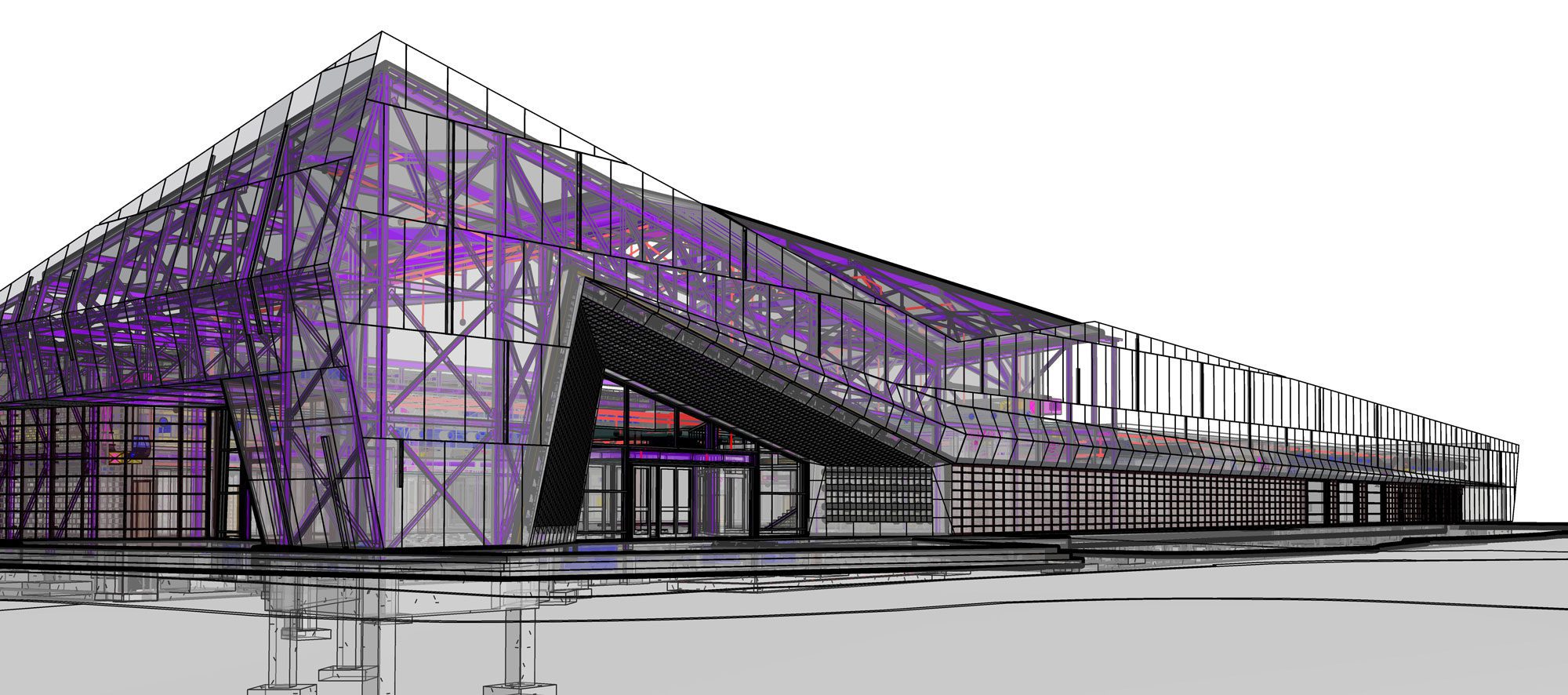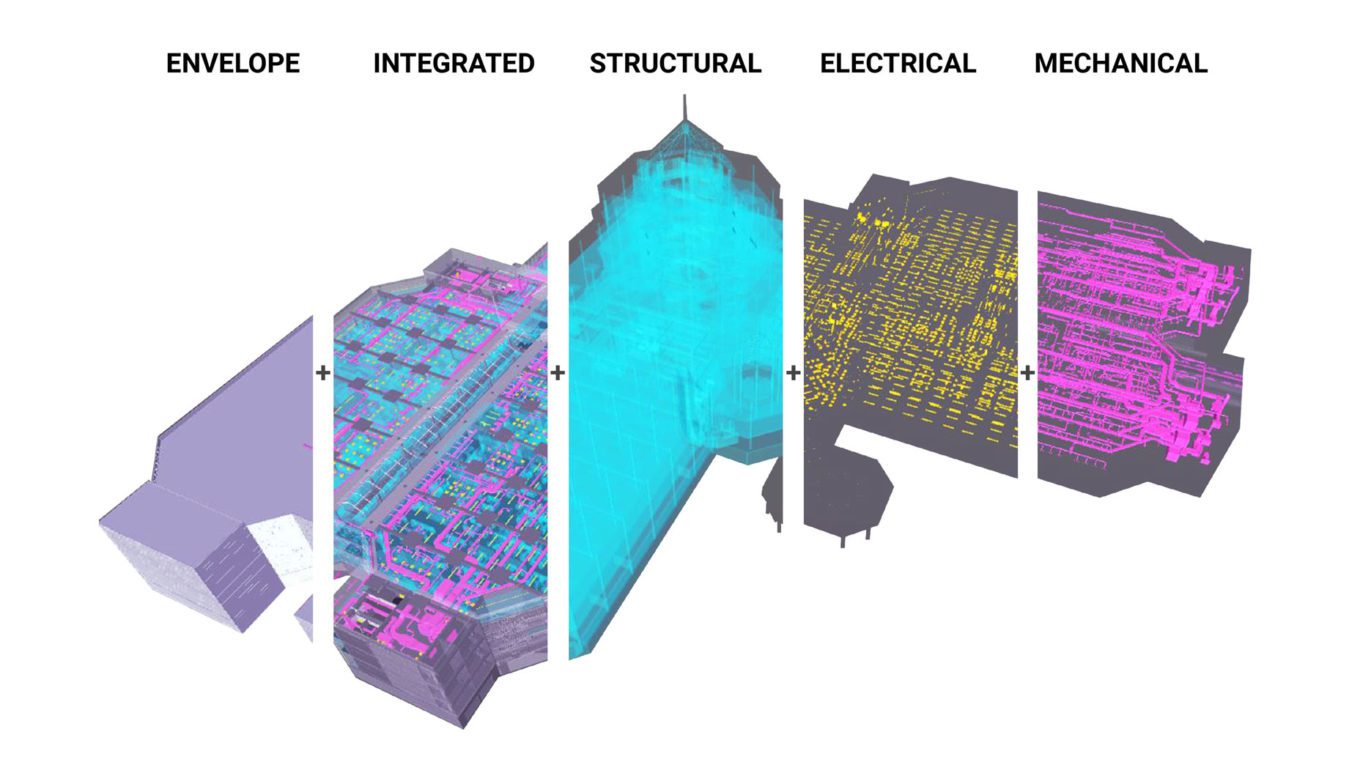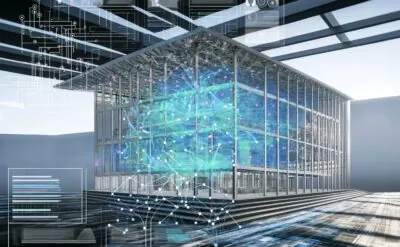There are many stages in the lifecycle of a building. Design and construction form the initial phases of the lifecycle, but the impact of these stages play a significant role over the long term. So, how do designers provide ongoing value? The short answer is through digital assets and rich data generated from Building Information Modelling (BIM) and Digital Twins created during the design and construction phase.
Building Information Modeling (BIM) provides 3D model and asset information to owners and operators, helping them better understand their new infrastructure in a way not possible before. NORR utilizes BIM as a design tool, allowing our multi-discipline teams to collaborate in a much more integrated way. This improved integration provides a well-coordinated design leading to streamlined construction. There is another benefit to using BIM – rich data. BIM’s inherently parametric characteristics embed data into each 3D object, and this is how the value can truly last the entire lifecycle of a project. This data can be extracted and used for facilities management and operation, paving the way for the adoption of another technology, Digital Twins.
A Digital Twin is a digital version of something physical, with connections between the two in the form of data. Using sensors and the Internet of Things (IoT), data can be visualized in a 3D model providing real-time feedback. This concept was first applied in manufacturing, helping to optimize robotics and equipment on the assembly line, and has since expanded into other areas, such as aviation and power generation. The idea is now coming full force into the building and infrastructure industries, with the aim of improving the entire lifecycle of the built asset. A Digital Twin can provide tremendous benefit to an owner/operator. Access to real-time, visual feedback of a building’s behavior provides insight into performance and comfort.
Use Cases: Pandemic
My first time seeing a Digital Twin in action, and how data could be displayed in a 3D model instead of in tables, was the moment I realized the future. There are many examples of use cases, but there is one that is particularly relevant to the current COVID-19 pandemic and beyond: adapting to partial occupancy of buildings. Since the outbreak of the pandemic, there have been widespread closures of places of work, which continue in many regions today. There has been a massive shift to work from home, leaving office buildings mostly vacant.
This shift was the topic of a recent Urban Futures Charrette hosted by the Carleton Immersive Media Studio (CIMS) at Carleton University in Ottawa, Canada, of which NORR is an industry thought leader contributor. One possibility explored was the rise of co-workspaces, where no one would have assigned offices, but would book an office or meeting space when needed, working from home most of the time. This system is already used by companies such as Deloitte, and the Government of Canada has also been exploring this style of work. Despite the fact a shift in this direction would reduce carbon emissions related to transportation (for work, at least), office buildings will now be operating at reduced capacities, without the ability to dynamically adjust and adapt to an ever-changing occupancy level. While the future of work is unpredictable, there is an apparent need for more adaptable buildings. This is where Digital Twins comes into the story.
Combining a highly detailed BIM with sensor data on a Digital Twin platform, building operators can easily visualize occupancy, lighting levels, temperature and humidity, allowing for improved energy consumption. Using this data, operators can quickly find patterns and optimize their building’s performance, allowing for a more fine-tuned approach to zoning and energy consumption, providing considerable operational savings. Further, highly accurate simulations can be performed using Digital Twins. Historical building data delivers an extra level of accuracy to simulations, as it does not rely on averages for climate and weather, or assumptions on system performance. This accuracy offers greater confidence when planning renovations, leading to even more savings. These savings are not only financial but help reduce the building’s carbon footprint as well.
Digital Twins provide a way to leverage highly detailed BIMs as a critical tool throughout a building’s entire lifecycle, offering a way to easily monitor, optimize and improve its operational efficiency. The work NORR does early in the project’s life, including design and developing the BIM, continues to provide value for the building and its owners long after handover. This technology will play a major role in the future of buildings and infrastructure, and we look forward to continuing to work with our clients to deliver meaningful value.

Resources
I recently moderated a panel discussion related to Digital Twins at CanBIM’s Ottawa Regional Session. There are excellent presentations from owners, consultants and contractors on the benefits of Digital Twins from the day’s event. Videos are available on CanBIM’s website.



